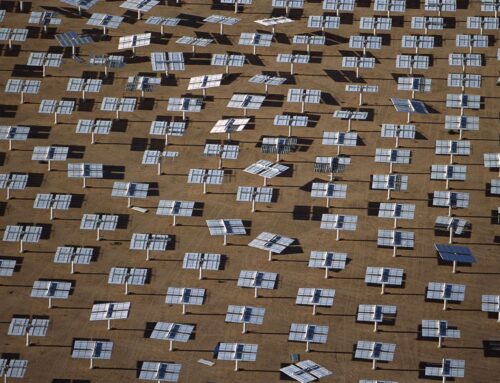Investing in agriculture reduces poverty and inequality: economic model finds the best fun
May 5, 2025
Africa faces challenges in reducing extreme poverty and inequality. In 2024, 8.5% of the global population was living in extreme poverty (that is, on less than US$2.15 a day). Nearly 67% of these people were living in sub-Saharan Africa.
To tackle these significant issues of poverty and inequality, it is essential to identify the locations of the most impoverished individuals. This enables investments to focus on generating growth and productivity that are both inclusive of poor people and sustainable.
About 70% of the poor in sub-Saharan Africa live in rural areas. Most (65% to 70%) are employed in agriculture. Agriculture also contributes 30%-40% to the gross domestic product (GDP).
Despite its importance, agriculture is underfunded. African countries don’t have enough of their own resources to finance agriculture, and external funding is becoming more scarce.
The region thus desperately needs an innovative plan to finance agriculture for economic development.
In a recent study we analysed
how different ways of funding agricultural investment would affect inclusive growth and the wider economy in 10 African countries. Raising taxes, cutting budgets and external support were the different funding options we explored.
We created economic models that would help countries with tight budgets understand the trade-offs and choose the best options.
Our study found that investing more in agriculture – especially with external financing – was best at raising incomes and reducing poverty, particularly in rural areas. External funding avoids the higher costs of domestic financing. But a mix of both is also effective.
Regardless of the country, all financing options resulted in increased rural incomes, reducing poverty and hunger. This shows that investment in agriculture has a positive impact both nationally and in rural contexts.
The model
Our paper uses an economic simulation model which looks at the big picture and also at more detail. It works out how changes in agricultural spending affect people’s lives (in terms of their income and expenditure) as well as the overall economy.
The countries studied were Angola, Mozambique, Namibia, Botswana, Rwanda, Gabon, Malawi, eSwatini, Lesotho and Zimbabwe. We chose them based on the availability and accessibility of the data required.
The model worked out the results of different financing strategies:
-
Increase in taxes (direct ones like household income and property tax or indirect ones like VAT or sales tax). The idea is that spending more on agriculture would be compensated for by higher tax revenues. These would come from households’ growing income and property taxes.
-
Reduction in non-agricultural investment spending. Here, the proportion of government investment dedicated to agriculture remains fixed. So there has to be less investment elsewhere.
-
Increase in government external borrowing or development assistance.
Key findings
We found that external financing boosted both national and rural incomes the most. But variations in the exchange rate may trigger an increase in domestic prices and a subsequent decline in export volumes. That could make a country less competitive economically.
Despite this, the associated costs are generally lower than those of internal financing, aside from Mozambique’s rural income results.
Between the two internal financing mechanisms tested, the option of reducing non-agricultural investment raised both national income and rural income in all countries except eSwatini.
So that option should play a key role along with external financing.
This finding is encouraging for fiscally constrained countries as the modelling showed that domestic financing improved the countries’ agency in sustainable growth.
In a final modelling phase, the models explored how the policy interventions could transform poverty and inequality outcomes. They did this by following the intricate interplay of income and price dynamics. After a surge in agricultural investments following the policy scenarios, the findings showed a more pronounced reduction in poverty and inequality rates across all nations. There was one notable outlier — Angola. In Angola, investments channelled into the services sector have sparked the most substantial decreases in poverty and inequality, driven by the deep interconnectivity between services and its expansive oil industry.
Even a small increase in public investment led to a clear drop in poverty, with agriculture investments having the biggest impact, followed by industry and services. Malawi showed the most substantial reduction in poverty. There were also noticeable effects in Rwanda, Botswana, eSwatini and Angola.
Other countries showed mild impacts, maintaining low poverty levels.
What can be done
Scenario modelling can offer valuable insights for policy making because it is forward-looking. It also highlights the implications of strategic priorities.
The study’s findings show that to achieve inclusive economic growth, countries should aggressively invest in agriculture, using a mix of external and domestic fiscal sources.
On the back of the findings we made the following proposals.
African governments are dependent on development aid because of limited domestic finances and weak growth prospects. This gets in the way of their ability to raise funds in the markets. However, if concessional financing is attainable and exchange rate impacts are controllable, external financing should remain a preferable option for financing agriculture investments.
In the medium term, governments must focus on:
-
cutting unproductive non-agricultural spending
-
eliminating waste
-
ensuring cost-effectiveness.
Savings should be redirected to agriculture.
Over the medium term, there should be a focus on reforming tax policies. Direct and indirect taxes should be increased to fund agricultural investment. But maintaining transparency in using tax revenues is crucial. This encourages public support and local ownership of tax reforms by demonstrating their benefits.
In the long term, governments should synchronise national development plans with ambitious agricultural growth initiatives.
Search
RECENT PRESS RELEASES
Related Post



